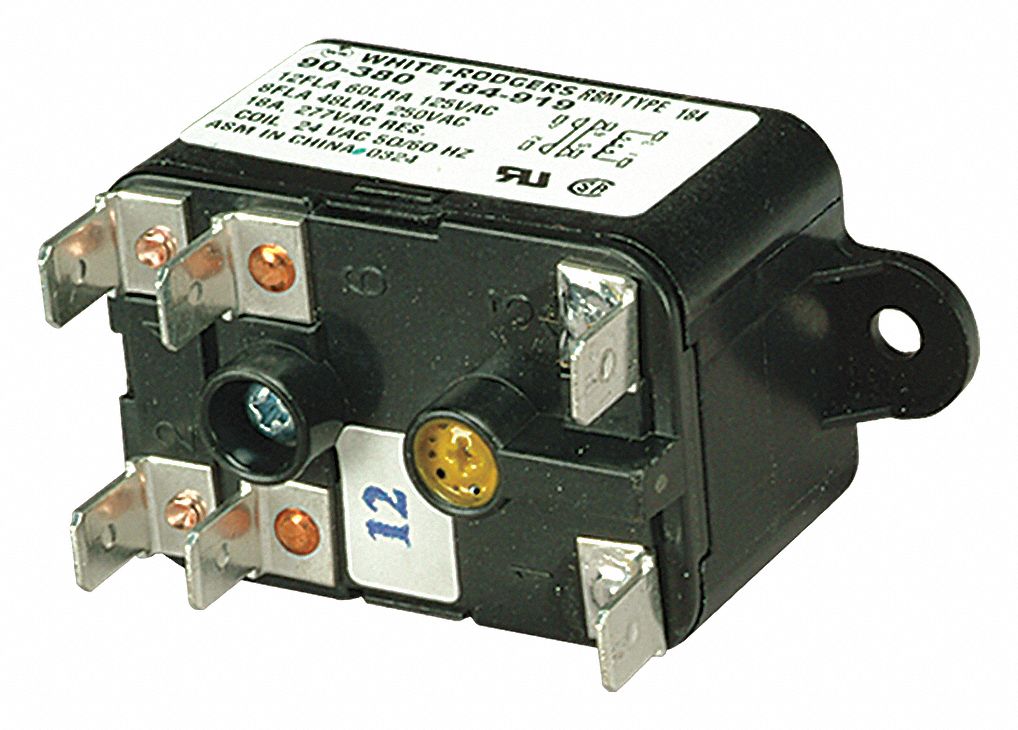Understanding Your HVAC System's Heartbeat: The Electric Fan Relay
Imagine a sweltering summer day. You flip on your air conditioner, expecting a cool breeze, but instead, you're met with silence. Often, the culprit behind this frustrating scenario isn't a major component failure, but a small, unassuming device: the electric HVAC fan relay. This crucial component acts as the switch that powers your HVAC system's blower motor, ensuring proper air circulation and comfortable temperatures.
The electric HVAC fan relay might be small, but its importance is immense. It bridges the gap between the thermostat's signal and the blower motor, delivering the power needed to circulate cooled or heated air throughout your home. Understanding how this component functions is key to maintaining a comfortable indoor environment and avoiding costly repairs.
HVAC systems have evolved over the decades, moving from basic mechanical controls to sophisticated electronic systems. The introduction of the electric fan relay was a pivotal step in this evolution, allowing for more precise control over the blower motor and enhancing the overall efficiency of climate control. Older systems often relied on mechanical switches prone to wear and tear, while modern relays offer improved reliability and longevity.
A common problem with HVAC fan relays is sticking contacts. Over time, these contacts can become corroded or worn, preventing the relay from properly engaging or disengaging. This can lead to the blower motor continuously running or not starting at all. Other issues include a burnt-out coil or a faulty control board, which can also disrupt the relay's functionality.
Essentially, an HVAC fan relay is an electromagnetic switch. When the thermostat signals for cooling or heating, it sends a low-voltage current to the relay's coil. This energizes the coil, creating a magnetic field that attracts a metal armature, closing the relay's contacts. This action completes the circuit, allowing a higher-voltage current to flow to the blower motor, activating the fan. When the thermostat no longer calls for heating or cooling, the current to the relay is cut off, the magnetic field collapses, the contacts open, and the blower motor turns off.
A key benefit of using an electric HVAC blower relay is improved safety. By using a low-voltage circuit to control the high-voltage circuit powering the blower motor, the risk of electrical shock is significantly reduced. This isolation also protects the thermostat from potential damage due to high-voltage surges.
Another advantage is increased efficiency. The relay allows for precise control over the blower motor's operation, ensuring it runs only when necessary. This helps conserve energy and reduce electricity bills. Furthermore, modern electronically commutated motors (ECMs) paired with advanced relays can further optimize fan speed and airflow, maximizing energy savings.
Finally, the electric relay contributes to the longevity of the entire HVAC system. By acting as a buffer between the thermostat and the blower motor, it protects the motor from voltage fluctuations and excessive wear. This can significantly extend the lifespan of the blower motor, a major component of your HVAC system.
If you suspect a faulty relay, troubleshooting can often be done with a multimeter. Checking for continuity across the relay's contacts can reveal whether the relay is functioning correctly. Replacing a faulty relay is typically a straightforward process and can be done by a homeowner with basic electrical skills, saving on costly service calls. However, it's always recommended to consult with a qualified HVAC technician for complex issues or if you are unsure about any part of the process.
Advantages and Disadvantages of Electric HVAC Fan Relays
| Advantages | Disadvantages |
|---|---|
| Increased safety | Potential relay failure |
| Improved efficiency | Requires some troubleshooting knowledge |
| Extended component lifespan |
One common challenge with electric HVAC fan relays is diagnosing the exact cause of blower motor issues. Since several components can contribute to similar problems, pinpointing the faulty part requires careful troubleshooting. A solution is to systematically check each component, starting with the relay, using a multimeter and following a troubleshooting guide.
Another challenge is selecting the correct replacement relay. Different HVAC systems require specific relay types, and using an incompatible relay can lead to further problems. The solution is to carefully check the specifications of your existing relay or consult the HVAC system's documentation to ensure compatibility.
Frequently asked questions include: What are the signs of a bad HVAC fan relay? How do I test an HVAC fan relay? Where is the HVAC fan relay located? What causes an HVAC fan relay to fail? What type of relay do I need for my HVAC system? Can I replace the relay myself? How much does a new relay cost? How do I prevent relay failure?
A simple tip for maintaining your HVAC fan relay is to keep the unit clean and free of dust and debris. This can prevent corrosion and extend the lifespan of the relay's contacts.
In conclusion, the electric HVAC fan relay, while a seemingly small component, plays a vital role in the overall functioning and efficiency of your heating and cooling system. Understanding its function, potential issues, and troubleshooting techniques empowers you to maintain a comfortable indoor environment while preventing costly repairs and maximizing the lifespan of your HVAC system. By paying attention to this essential component and taking preventative measures, you can ensure your HVAC system runs smoothly for years to come. Don't underestimate the power of this small but mighty device. Regularly checking your system, including the relay, can save you time, money, and discomfort in the long run. Learning about your HVAC system can feel empowering, allowing you to address minor issues before they escalate into major problems. Take the time to familiarize yourself with your system’s components and their functions – you’ll be glad you did.
Farrow and ball off white paint a subtle difference
Effortless inflation electric air pumps for your adventures
The enduring mystery of brad pitts box a cultural phenomenon












